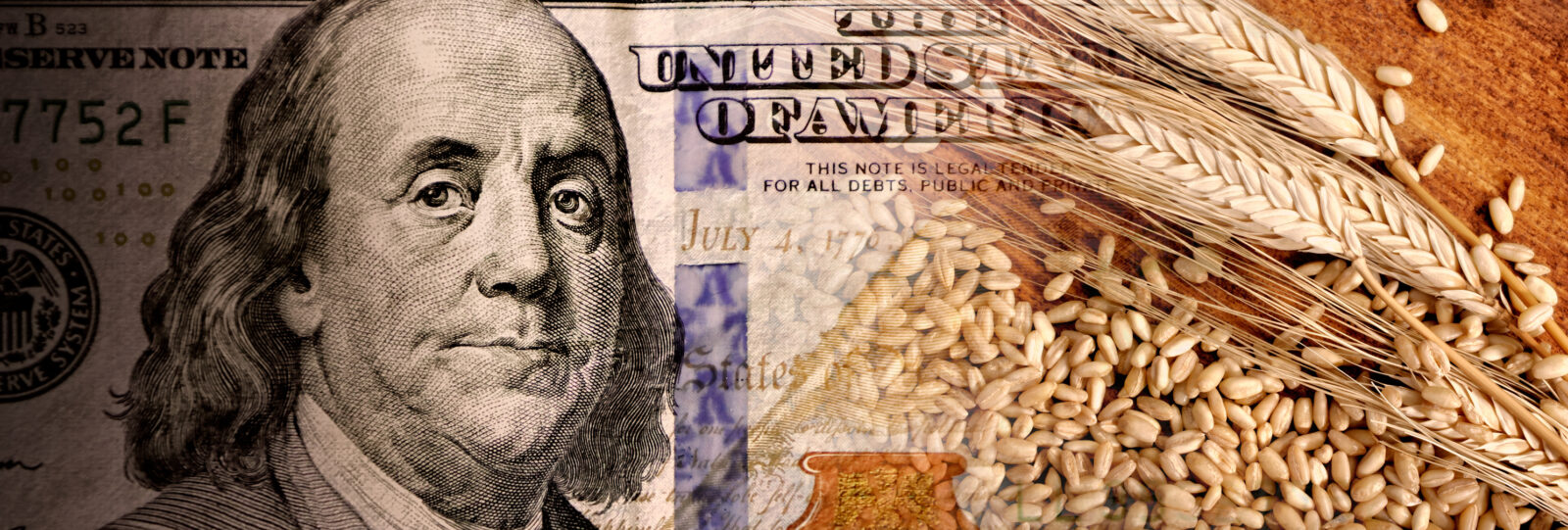By Carolina Vargas, Ph.D., Agricultural Economist and Farm Business Management Advisor for Pinion
Farmers are no strangers to change, but 2025 is shaping up to be one of the most unpredictable years yet. Global conflict, shifting trade policies, volatile markets, and uncertain government programs are creating both challenges and opportunities. I recently attended the Agricultural and Applied Economics Association (AAEA) conference, where discussions reinforced a key point: agriculture is cyclical, with its inevitable ups and downs. The question for farmers today is not if change will come — it’s how to respond strategically to protect profits and build resilience in this evolving landscape.
Geopolitical Uncertainty
Let’s start with the global picture. Conflict and instability around the world have disrupted supply chains and increased input prices. The war between Russia and Ukraine, two major players in urea production, has put pressure on fertilizer prices. On top of that, China has been cutting back on phosphorus exports since late 2024 to meet its own internal demand, which has tightened global supply even more.
Just this August, DAP fertilizer prices at the Port of New Orleans hit a record high compared to corn prices. That’s a big deal. The only silver lining here is that energy prices have come down a bit.
At the same time, global demand for agricultural commodities has slowed, particularly for raw materials and edible oils. This decline, coupled with favorable weather conditions in South America, has contributed to falling commodity prices, leaving farmers squeezed between lower revenues and higher input costs.
Trade Uncertainty
Trade tensions have added another layer of complexity. When tariffs were announced this spring, the U.S. stock market, energy prices, and grain markets all experienced sharp declines. Although markets have somewhat stabilized, grain prices remain volatile, making it difficult for farmers to determine the best time to sell.
Tariffs have also disrupted access to manufacturing materials essential for farm machinery and vehicles. Between 2020 and 2021, material shortages led to an increase in prices, further straining farm budgets.
Equity and Debt Challenges
Debt is another area where things are murky. On the one hand, land values are up. According to USDA’s August 1 report, cropland values rose by $180 per acre over last year, a 4.3% increase, bringing the average to $4,350 per acre. That’s great news for farmers who own their land, because it increases their equity. But for renters, it’s a different story. Cash rent for cropland hit a record high $161 per acre, while pastureland rent stayed flat at $16.
On the other hand, interest rates are still high to help alleviate inflation, loans are more expensive, and interest payments are eating into budgets — all making it unclear how accessible credits are to farmers.
Government Support: Still Unclear
Between the Farm Bill, USDA budget cuts, and other policy shifts, it’s been hard to figure out what kind of support farmers can count on. That said, direct government farm payments are projected to increase significantly in 2025, reaching $42.4 billion — a $33.1 billion jump from 2024 (USDA- Farm Sector Income Forecast). These payments include federal program funds paid directly to farmers and ranchers. However, support from USDA agencies may be more limited, and the conditions for accessing assistance remain unclear.
Different Farmers, Different Impacts
This uncertainty is playing out differently depending on the type of farm:
- Commodity farmers have seen profits steadily decline since 2022, mostly due to falling crop prices and rising input costs. Many government programs seem geared toward them, but the financial pressure is real.
- Specialty crop farmers are facing higher input costs but have benefited from increased demand for niche products. Support for sustainable practices, however, remains uncertain.
- Livestock, dairy, and poultry farmers had a rough start with bird flu, but things have improved. Lower grain prices and higher demand for meat, plus smaller herd sizes from 2020–2021, have pushed meat prices up and helped margins.
So, What Can Farmers Do?
While no one can control global markets or government policy, there are actions you can take to steady your operation. Here are three steps to focus on right now:
- Stay calm. Ag economics is cyclical.
There will always be ups and downs. If you look at long-term Chicago Board of Trade continuation charts, you’ll see how prices have moved over time. Use those to stay grounded. And remember, you’re not alone; there are academics, extension workers, and consultants all working hard to help farmers through this low.
- Know where you stand.
A lot of farmers aren’t sure what their true cost of doing business is, and that’s understandable. Farming is hard and tracking every expense takes time, but knowing your strengths and weaknesses is key to planning for tough times.
Take advantage of diagnostic benchmarking tools and services, like Pinion’s SnapShot, which tracks your production and financial performance while comparing your operations to top performers. These services highlight strengths, reveal areas of improvement, and uncover new opportunities.
- Reach out to your people.
Talk to your farm partners, neighbors, and friends you trust. And reach out to experts. Once you know where you stand, you can get help tailored to your situation. Maybe it’s negotiating better input prices, working with a risk management team to reduce volatility, or diving deeper into financial planning. If you need help accessing government payments or understanding your land, our team of expert advisors is here for that too.







